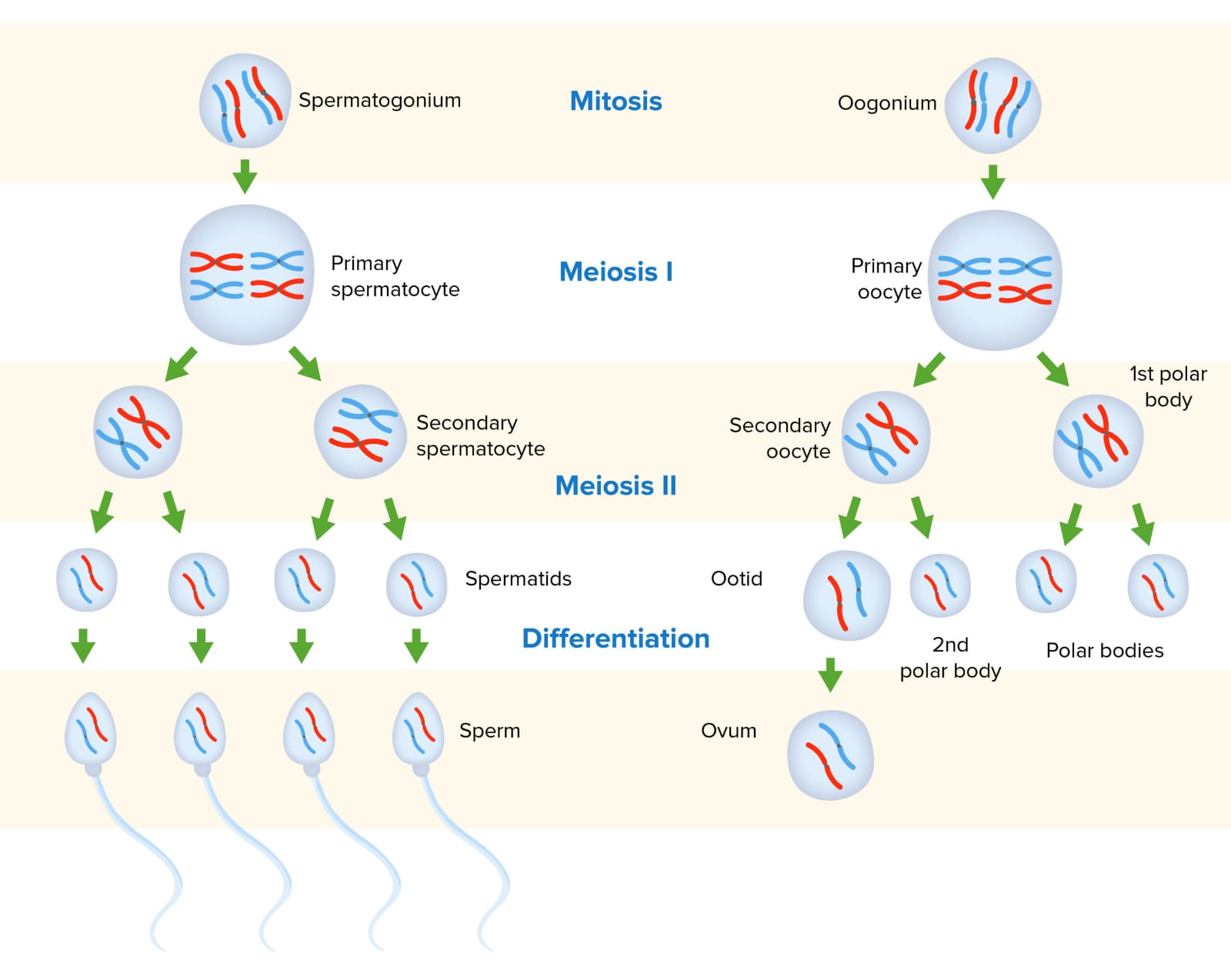MCQ ON GAMETOGENESIS class 12 for NEET | GAMETOGENESIS class 12 | MCQ THE GAMETOGENESIS with Answer | Check the below NCERT MCQ question for class 12 Biology chapter 03 based on the with Answers.

MCQ ON GAMETOGENESIS class 12 for NEET
MCQ on GAMETOGENESIS class 12 Biology with answers were prepared based on the latest pattern.We have provided class 12 Biology MCQs questions on GAMETOGENESIS with Answers to help students understand the concept very well.
MCQ ON GAMETOGENESIS is useful for NEET / CSIR / UGC / CBSE / ICSE / AIIMS / EXAM / AFMC EXAM / STATE LEVEL MEDICAL EXAM 2022-23, 2023-24
Introduction:-
Mammals are unisexual . The reproductive system of each sex consists of many organs .There is a distinct sexual dimorphism. Males visibly differ from females in physical standards, external genital organs and accessory sex characters. All you are aware , humans are sexually reproducing and viviparous. Repriductive events occur after puberty.
The female reproductive system consists of a pair of ovaries along with a pair of oviducts , uterus, cervix, vagina and the external genitalia located in the pelvic region.
MCQ ON GAMETOGENESIS class 11 for NEET
1. The primary sex organs- the testis in the males produce gametes
(a) sperms
(b) ovums
(c) germ cell
(d) immature male cells
Ans (a) sperms
2. The sex organs the ovaries in the female produce gametes
(a) sperms
(b) ovums
(c) ligament
(d) mammary lobes
Ans. (b) ovums
3. In testes, the immature male germ cells produce sperms by ……………..that begins at puberty.
(a) spermatogonia
(b) spermatogenesis
(c) primary spermatocytes
(d) secondary spermatocytes
Ans. (b) spermatogenesis
4. Each spermatogonium is
(a) haploid
(b) diploid
(c) triploid
(d) tetraploids
Ans.(b) diploid
5. Each spermatogonium contains ……. chromosomes
(a) 23
(b) 46
(c) 44
(d) 22
Ans.(b) 46
6. Each secondary spermatocytes contains only ……… chromosomes
(a) 46
(b) 23
(c) 22
(d) 24
Ans.(b) 23
7. The secondary spermatocytes undergo the second meiotic division to produce four equal , haploid
(a) spermatids
(b) spermatocytes
(c) vaginal
(d) sertoli cells
Ans.(a) spermatids
8. The The spermatids are transformed into spermatozoa (sperms) by the process called
(a) spermatocytes
(b) spermatogenesis
(c) spermiogenesis
(d) sertoli cells
Ans.(c) spermiogenesis
9. After spermiogenesis , sperm heads become embedded in the sertoli cells and are finally released from the seminiferous tubules by the process called
(a) spermiation
(b) infundibulum
(c) external genitalia
(d) spermiogenesis
Ans. (a) spermiation
10. The hormone acts at the Leydig cells and stimulates synthesis and secretion of androgens.
(a) FSH
(b) LH
(c) GnRH
(d) TH
Ans. (b) LH
11.The whole body of plasma membrane is covered by
(a) acrosome
(b) plasma membrane
(c) semen
(d) rete testis
Ans.(b) plasma membrane
12. The sperm head contains an elongated ……nucleus
(a) diploid
(b) haploid
(c) triploid
(d) all the above
Ans . (b) haploid
13.The anterior portion of head is covered by a cap- like structure
(a) ovum
(b) acrosome
(c) nucleus
(d) all of these
Ans.(b) acrosome
15. The middle piece possess numerous ……..,which produce energy for the movement of tail that facilitate sperm motility essential for fertilization.
(a) acrosome
(b) mitochondria
(c) Golgi body
(d) ribosomes
Ans. (b) mitochondria
ALSO READ:-
● YOU CAN WATCH BIOLOGY SIR Youtube channel
16. The process of formation of a mature female gamete is called
(a) spermatogenesis
(b) oogenesis
(c) secondary follicles
(d) clitoris
Ans.(b) oogenesis
17. The tertiary follicles changes into the
(a) labia majora
(b) labia minora
(c) Graafian follicle
(d) zona pellucida
Ans.(c) Graafian follicle
18. The secondary oocytes forms a new membrane called
(a) mons pubis
(b) labia majora
(c) labia minora
(d) zona pellucida
And.(d) zona pellucida
19. The Graafian follicle ruptures to release the secondary oocytes from the ovary by the process called
(a) ovulation
(b) labia majora
(c) labia minora
(d) oogenesis
Ans. (a) ovulation
20. The secondary follicles transform into a tertiary follicles which is characterised by a fluid filled cavity called
(a) alveoli
(b) mammary ducts
(c) lactiferous duct
(d) antrum
Ans.(d) antrum
21. The seminal plasma along with the sperms constitute the
(a) mammary lobes
(b) mammary duct
(c) acrosome
(d) semen
Ans. (d) semen







Leave a Comment